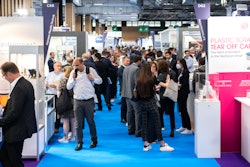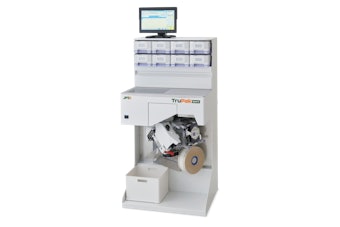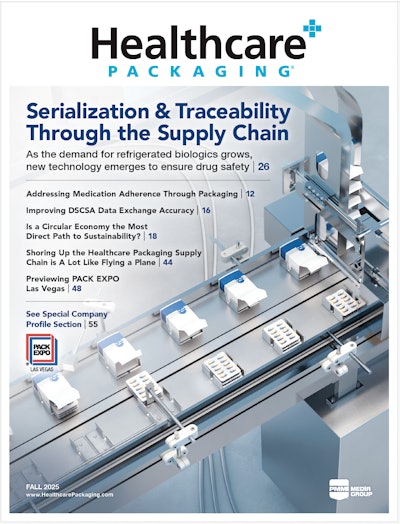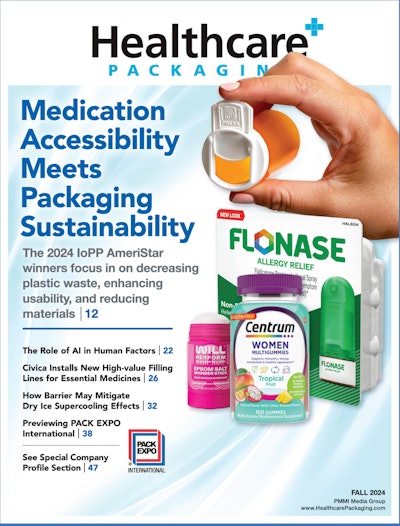Remarkably useful and once thought inert, per- and polyfluoroalkyl substances (PFAS) pose a growing concern for consumer-packaged goods companies, prompting a need for strategic action amid new scientific findings and legislation.
PFAS have woven themselves into the fabric of packaging and processing in the decades since their invention. Their applications include as a grease barrier in food packaging, a flow agent during plastics processing, a mold release agent, and in stain resistance for everything from car interiors to carpeting.
“They were so successful that we absolutely polluted the planet with them,” explains Keith Vorst, director of the Polymer and Food Protection Consortium (PFPC) at Iowa State University.
The PFPC is one of the largest organizations of its kind in the U.S., operating out of 10 labs to conduct packaging-related analysis, including shelf-life testing, packaging development, screening for chemicals of concern, and strategizing with brands and suppliers to establish PFAS threshold levels and identify contamination sources.
Knowledge gaps on the health and environmental toll of PFAS
Researchers are still studying the health and environmental effects of PFAS, but these largely manmade substances have become widespread through decades of use.
“Everyone on the planet right now is contaminated with these chemistries. Everyone on the planet, and most animals,” Vorst says. “[Researchers are] finding them in polar bears, in virgin forests, in marine environments that are several hundred feet below [the surface], even near the ocean floor.
PFAS can bioaccumulate in humans and is linked to various negative health effects, including decreased fertility, developmental effects or delays in children, and increased risk of some cancers, including prostate, kidney, and testicular cancers, according to the EPA.
Regulatory bodies like the FDA have worked to limit the use of more dangerous PFAS chemistries, including a phase-out of long-chain PFAS that was completed in 2016.
The problem doesn’t stop there, though. The short-chain chemistries that replaced them may be “as dangerous or even potentially more dangerous than the long-chain, depending on which researcher or which publication you look at,” Vorst says.
Several universities are working toward PFAS elimination or removal through methods like electro-oxidation, foam fractionation, and filtration techniques. However, these solutions are still years from scaling to a degree that creates measurable impact.
In the meantime, the priority should be limiting risk, identifying “what is a critical level, and what is an acceptable level, since it’s essentially everywhere in the environment,” Vorst explains.
Complications in recycling
Data is lacking on what happens in the second life of PFAS-contaminated packaging. Much of the supply of paper and plastic waste contains high concentrations of PFAS, but researchers are still studying what happens when these materials are recycled, and how much PFAS are being reintroduced with post-consumer recycled materials.
“This is where sustainability and chemical safety butt heads; because we want to improve sustainability, we want to include more recycled paper, recovered pulp, recovered plastic, but so much of it is PFAS-contaminated,” Vorst says. “And what are we going to do, reintroduce it? And we’re being told we have to.”
Vorst says companies should be managing the issue where possible.
“We can’t completely eliminate [PFAS] in recovered and recycled materials, at least not right now. But maybe we can reduce exposure levels, we can test to see if it’s an environmental concern, or if it’s a human exposure concern at the point of use, and we can test to make sure we’re below regulatory threshold levels,” he says.
Mitigation strategies begin with an assessment
If PFAS is so ubiquitous in the environment and in the recycling stream, how can companies begin to reduce exposure levels from their products?
The first step is opening communications to better understand the current supply stream, and where PFAS may be entering operations.
“The starts with doing an assessment of your suppliers, reaching out to your suppliers, getting good data from them, saying ‘do we have any intentionally added PFAS, are there [PFAS in] processing aids, and at what levels?”
That also includes internal monitoring. Companies will need to conduct regular testing of things like process lines, wash water, and landfill divert material to see where contamination may be occurring.
The problem can go deeper than one might think, especially with plastics. Plastic does contain much less PFAS concentration than coated paper on average, but the industry considered it a safe harbor before new information came to light in recent years.
Vorst used plastic bottles as an example. The end-user filling the bottle would say they are not adding any PFAS, and the supplier blowing the bottle would say the same.
“In about the last five years, the brand owners and the converters started going back to the actual resin manufacturer to ask, ‘are you using any fluoro-chemistry in your process?’ Yes, they were using it as processing aids,” Vorst says. “These were questions that were not asked 10 years ago. We just didn’t ask the right questions about plastics.”
Establishing critical exposure levels and finding alternative solutions
Once communications are open and data is in hand, companies should develop a critical threshold level, establishing what level of exposure is acceptable.
Vorst recommends relying on regulations to establish these numbers, as regulatory bodies in both the U.S. and the EU have established acceptable thresholds.
Following their lead “pushes the liability back onto those regulatory agencies, so you as a company aren’t taking on that liability,” he says. “Don’t take this upon yourself. You’re not going to win that battle.”
Companies should also consider alternative chemistries that offer the benefits of PFAS without problematic fluorinated compounds. That said, Vorst says we should be aware of regrettable substitutes.
“We have looked at some alternative chemistries that, in my opinion, are more harmful to humans and the environment than the PFAS,” he says.
Making informed decisions on PFAS in packaging
Since PFAS aren’t going away anytime soon, companies need to rely on supply chain data to make informed decisions.
That needs to be paired with an understanding that “there is no zero,” Vorst says. “When I can find it in polar bears in the Arctic, I’m probably going to find it in your packaging.”
Companies need to focus on identifying and limiting the substances’ presence in their operations. They should also tread lightly with marketing claims to avoid legal woes, steering clear of statements like “PFAS-Free” or even “No Intentionally Added PFAS” to not walk the line of plausible deniability.
Regulators need to follow the data to make informed policies as well. “Zero Tolerance” policies won’t be feasible until industrial-scale PFAS reduction technology is in place.
“That doesn’t mean that we aren’t going to get to a point where we can have a mitigation strategy or an elimination strategy that will get rid of these PFAS chemicals,” Vorst says. “But we don’t have it today, and we need a policy today.”
Finding the best way forward will take a group effort between companies, suppliers, consumer groups, and regulatory bodies, filling in knowledge gaps and utilizing current capabilities to agree on an acceptable level of risk.
























